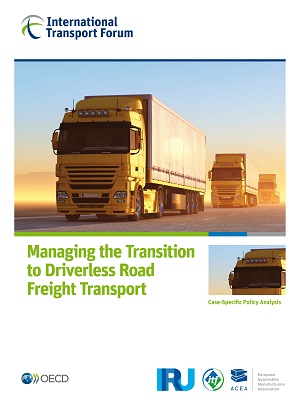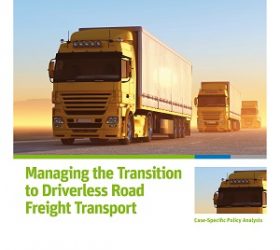Governments must consider ways to manage the transition to driverless trucks in order to avoid potential social disruption from job losses, says a new report published by the International Transport Forum (ITF) with three partner organisations.
 Self-driving trucks will help save costs, lower emissions and make roads safer. They could also address the shortage of professional drivers faced by road transport industry, the study says.
Self-driving trucks will help save costs, lower emissions and make roads safer. They could also address the shortage of professional drivers faced by road transport industry, the study says.
But automated trucks could reduce the demand for drivers by 50-70 per cent in the US and Europe by 2030, with up to 4.4 million of the projected 6.4 million professional trucking jobs becoming redundant, according to one scenario.
Even if the rise of driverless trucks dissuades newcomers from trucking, over 2 million drivers in the US and Europe could be directly displaced, according to scenarios examined for the report.
The report makes four recommendations to help manage the transition to driverless road freight:
* Establish a transition advisory board to advise on labour issues.
* Consider a temporary permit system to manage the speed of adoption.
* Set international standards, road rules and vehicle regulations for self-driving trucks.
* Continue pilot projects with driverless trucks to test vehicles, network technology and communications protocols.
These recommendations were agreed jointly by organisations representing truck manufacturers, truck operators and transport workers’ unions, under the auspices of an intergovernmental organisation. This broad coalition of stakeholders lends the call to action particular weight.
The report was prepared jointly by the European Automobile Manufacturers’ Association (ACEA), the International Transport Workers’ Federation and the International Road Transport Union (IRU), the road transport’s industry’s global body, in a project led by the International Transport Forum, a Paris-based intergovernmental organisation linked to the OECD.


.gif?rand=5225)








